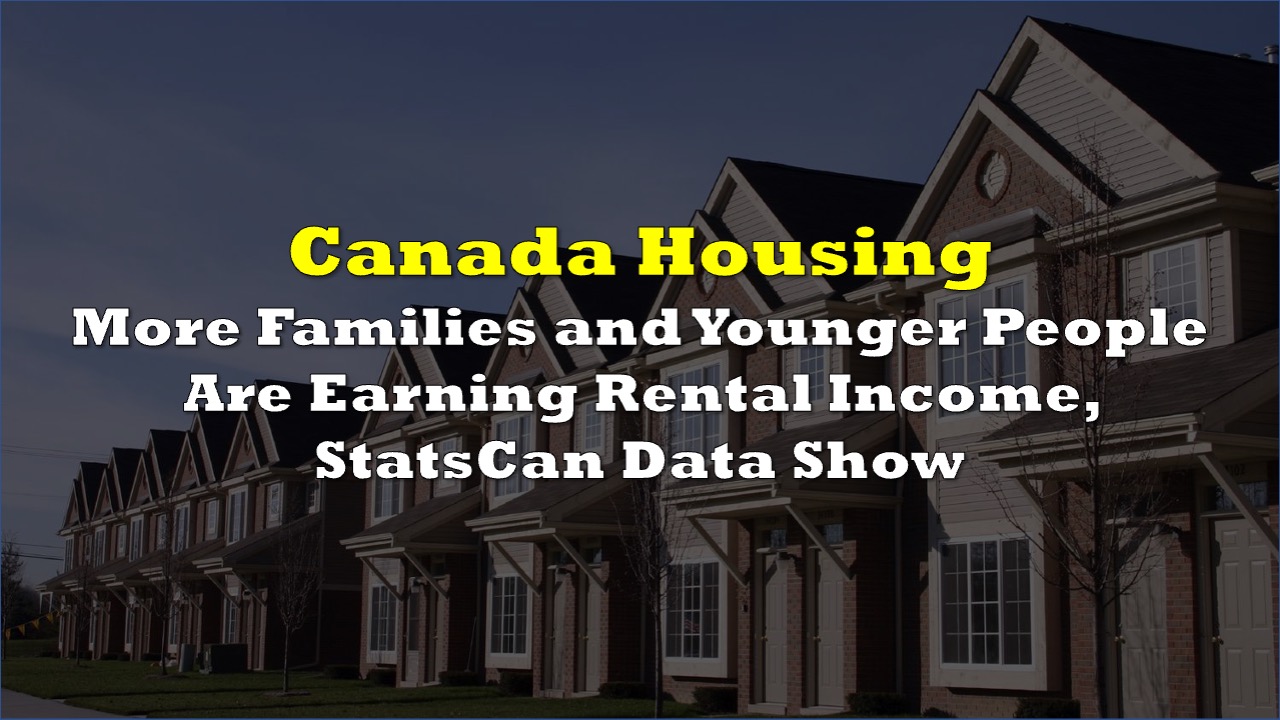A new report from Statistics Canada shows that 7.9% of families declared rental income in 2020, up from 7% in 2000. Of these families, the number of people belonging to the younger age brackets has grown in the last two decades.
The period covered by the report, 2000 to 2020, coincides with the period that showed an almost constant rise in housing prices combined with low interest rates, suggesting that families leveraged lower borrowing costs to acquire property and add a source of income.
StatsCan points out that among this group was a rising number of new landlords belonging to the 30 to 44 age cohort, indicating the growing attractiveness of housing as an investment for the younger market. From 2000 to 2020, the share of 30 to 34-year-olds grew from 4.1% to 5.2%, 35 to 39-year-olds from 5.3% to 7.2%, and 40 to 44-year-olds from 6.1% to 8.2%.

But not all landlords bought new property, there were also some who sought to share the load of housing expenses by renting out a portion or portions of their homes.
The census data found that 76.3% of landlords were already making a profit from their rentals and reporting positive net income, compared to just 63.1% in 2008. The median net rental income in 2020 was $4,880 for those in the green while those with negative net rental income reported a median of -$3,180.
This means that rental incomes only make up a small share of the total income of most of these landlords. The overall median annual family net rental income in 2020 was $2,750, or 2.3% of the total income. The data also found that the share of rental versus total income was highest in Vancouver at 11.2%.
The report also shows that couple families were more likely to be landlords than lone-parent families and persons not in families, at 11.3%, 5.1%, and 4.1% respectively. This was likely because couple families, who have the highest median total income, have access to more cash flow and are more likely to acquire a property to rent.
Overall, the report paints a picture of the typical Canadian landlord: a couple living in a big census metropolitan area, and working another job. And while the number of younger landlords is growing, those between 45 to 64 years old still make up 46.7% of those who reported rental income.
But so much has happened in the housing market since 2020. 2022’s higher borrowing costs from the Bank of Canada’s rapid rate hikes could lead to a decline in the share of families with rental income in that year, or to a reduction in net rental income for these families, according to the report.
Information for this briefing was found via Statistics Canada, and the sources and companies mentioned. The author has no securities or affiliations related to this organization. Not a recommendation to buy or sell. Always do additional research and consult a professional before purchasing a security. The author holds no licenses.









